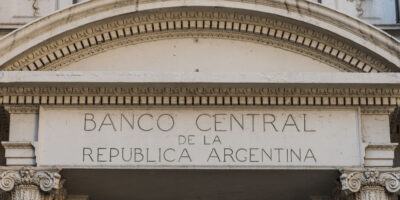Panic of 1907: The Short Crisis That Began Money’s Long Fall
The Panic of 1907, 110 years ago, was used to justify the creation of the Federal Reserve. From an economic perspective, the justification was a weak reed.
The legendary J.P. Morgan is credited by scholars with ending the banking panic, but the bigger story is that the crisis didn’t engulf Main Street. Wall Street didn’t suffer much either, although the New York Stock Exchange temporarily fell by half from its high of the previous year.
The entire crisis was short too — just three weeks. Why?
Arbitrage opportunities were created in the trading of reduced price U.S. securities overseas. That trading sent gold back to the United States, adding to the money supply and shortening the crisis, wrote Mary Tone Rodgers and Berry K. Wilson of Pace University in their paper “Systemic Risk, Missing Gold Flows and the Panic of 1907.”
In those days of the gold standard, its mechanism caused gold to flow between countries depending on prices arrived at through trading.
Absent a central bank, international business and the gold standard reupped the money supply, which proponents of central banks complained of as being “inelastic.”
The panic, also known as the Knickerbocker Crisis, began in mid-October with a failed attempt to corner the market in United Copper Co. stock. Banks that lent to the players experienced runs, and that led to the failure of the Knickerbocker Trust Co., New York’s third-largest trust institution. Depositors pulled money out of regional banks, which, in turn, pulled money out of New York banks, exacerbating problems in the banking sector.
But life outside New York went on. President Theodore Roosevelt, not exhibiting much concern, traveled to Louisiana for a bear hunt during the crisis.
The real story of 1907 is highly instructive to those concerned with “too big to fail,” that infamous concept that sprang to life during the 2008 financial crisis and subsequent efforts to create a systemic-risk regulator, Rodgers and Wilson wrote in their report, published in the summer 2011 issue of the Quarterly Journal of Austrian Economics.
“The structure of the U.S. financial system precluded spillover effects from the systemic suspension of bank deposit convertibility during the Panic of 1907. Indeed, the U.S. bond and stock markets remained viable and a source of economic strength during the panic,” the paper states.
In other words: Contagion? What contagion? Free flow of gold stemmed the crisis and enabled the crisis to end in less than a month, not years like the contemporary variety.
Mechanisms of what some free market economists call “private governance” were key in shortening the crisis. Rodgers and Wilson point to private governance as the first of four key phenomena that strangled contagion in its crib.
“Contractual arrangements in the securities markets … allowed coupon and dividend payments to occur despite the suspension of such payments through the banking system,” the paper says.
According to Edwin P. Hoyt Jr.’s 1966 book “The House of Morgan,” the Panic of 1907 began with a number of speculators who had misread or ignored signs of trouble, or “had chosen to fish in such troubled waters where fortunes are sometimes made.”
Morgan cut short a vacation to return to New York. To shore up the banking system, he pledged some of his own money and got other leading New York bankers to do likewise. Among his underlings was Benjamin Strong, who later became the first leader of the Federal Reserve System as president of its New York bank. In the crisis’s aftermath, Morgan and others decided that “security should not rest on one man,” Hoyt wrote.
In his autobiographical book “The Courage to Act,” former Fed Chairman Ben S. Bernanke called the Panic of 1907 “an embarrassment,” but he doesn’t say for whom. The fact that the system largely righted itself quickly seems lost on Bernanke.
While the Fed continues to print lots of money and make many headlines as the world bounces through crises of increasing length, ties of private governance continue to hold the system together. Private governance helped counter the financial crisis of 2008, scholars have noted. Inflationist central bankers and other regulators lit the match for the crisis and then posed as firefighters. Most people are unaware that private governance is the actual fire department.
While the analysis of Rodgers and Wilson casts a long shadow of doubt on the economic arguments of central bank advocates, political currents of the era made the 1913 creation of the Fed, that great engine of inflation, an inescapable result. Murray Rothbard, in his “The Origins of the Federal Reserve,” traces the drive to the Progressive movement, a bipartisan phenomenon whose champions included Teddy Roosevelt.
Progressivism succeeding in converting the U.S. economy from “roughly laissez-faire to centralized statism,” Rothbard noted. The lure of high-paying jobs in the bureaucracy, the prospect of controlling the economy through licensing and other restrictions by the state, created many supporters.
Rothbard’s analysis includes a negative verdict on J.P. Morgan, who many view as a pillar of American capitalism thanks in part to his role in ending the crisis.
“The Morgans needed a smokescreen of ideology, setting forth the rationale and apologetics for the New Order,” Rothbard wrote. “The enormous growth of intellectuals, academics, social scientists, technocrats, engineers, social workers, physicians, and occupational ‘guilds’ of all types in the late 19th century led most of these groups to organize for a far greater share of the pie than they could possibly achieve on the free market.”
A key political development was the election of 1896, which observers saw as a referendum on the gold standard, which had been reinstituted in 1879 following its suspension during the Civil War 14 years earlier. The anti–gold standard candidacy of Democrat William Jennings Bryan ended the dominance of hard-money, laissez-faire, free trade supporters in the Democratic party and created an era of dominance by inflationist Republicans that lasted until the Great Depression–era election of 1932, Rothbard wrote.
The Fed was created in 1913 under Democrat Woodrow Wilson. Wilson opposed Bryan in 1896 but Bryan’s support of Wilson in the 1912 election showed that inflationism had gained the upper hand among Democrats. Through his attack on the gold standard beginning in 1933, FDR cemented Democrats’ allegiance to inflationism, a policy stance that remains to this day.








